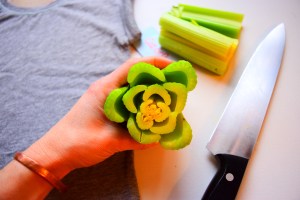Inspiration for our HOMEMADE ELDER-BLOSSOM NECTAR came from one of my favorite children books, “Linnea’s Almanac” by Christina Bjork and Lena Anderson. L rediscovered the Linnea books a couple weeks ago and has been poring over each page. In the July section of the book is a recipe for Elder-Blossom Nectar. Since I had never made it, but always wanted to, we got to work! The very day we came across the recipe, we spotted an Elder Tree on one of our outings! How lucky were we!?! A few days later, we went on an early morning adventure and harvested the Elder blossoms.


Ingredients:
- 25-30 Elder blossom clusters
- 1-2 lemons
- 2 lbs sugar
- 1 quart water
Before you harvest Elder blossoms, you want to make certain that you have the right type of tree. There are other blossoms that are similar, poisonous Elder and poison Hemlock, but are not the same. True Elder blossoms will be on a tree. The white flowers are in big, flat, round clusters that have a strong, sweet smell. (see pictures below) Poisonous Elder grows in pointed clusters that are yellowish-green and they do not have a strong scent. Poison Hemlock has a very different, fern-like leaf shape, and it grows more like a weed…not a tree.



Once you find your Elder tree, you’ll want to cut off 25-30 flower clusters. Have your kids help you count the flowers, inspect them with a magnifying glass for fun, and put them in a large jar.



Next, back at home, slice your lemon and add it to a pot with the water and sugar. Heat the mixture to a boil, then carefully pour it into the jar with your Elder blossoms. Cover the jar and let it sit for three days.



While the nectar is setting, time to find and clean some bottles! You want to make sure your bottles are well washed in preparation for the nectar.
After three days, it’s time to bottle your nectar! Opening the lid, you won’t believe the sweet aroma that’s been bottled up inside! (I have to admit, I cheated. We opened the jar everyday to smell our nectar…it was just so tempting!)


First remove whatever blossoms and lemon pieces you can with a fork or spoon.

Next, tie a cheese cloth around the top of your jar. Strain the nectar thru the cheese cloth, pouring it into a large pitcher.


From here, you pour the nectar into the clean bottles or jars you’ve prepared. Make sure you fill the bottles to the top and secure the lids tightly. If done properly, your nectar will last for six months in the refrigerator. After you open a bottle, you’ll have to devour the contents within a month…no problem there! It’s just so good!

Uses and Recipes:
We use our nectar similar to other syrups or honey.
- First we made a cold, summer drink by adding 4 tablespoons of the nectar to a quart of water. Yum!
- You can make a warm, milky, tea-like drink as well. Stir together 1 teaspoon of nectar, 1/4 teaspoon vanilla, and 1 cup of milk for each person. Warm the mixture in a saucepan and pour it into a teapot. (This tea is perfect for summer night tea parties, while watching the stars, lightning bugs, and bats come out!)
- You can also drizzle your nectar on pancakes or over hot oatmeal or grits for breakfast. Delish!


Bjork, Christina and Lena Anderson. “Linnea’s Almanac.” Stockholm: Raben & Sjogren, 1982. Print.


































































































































